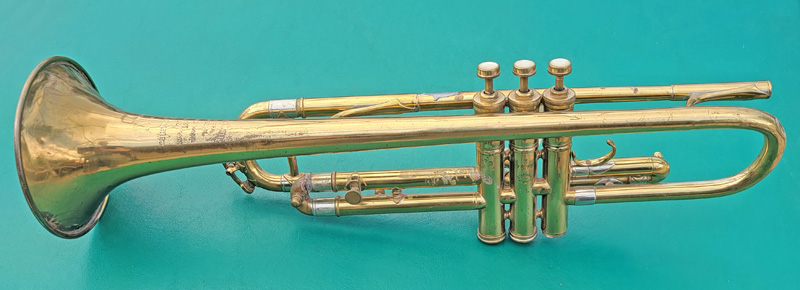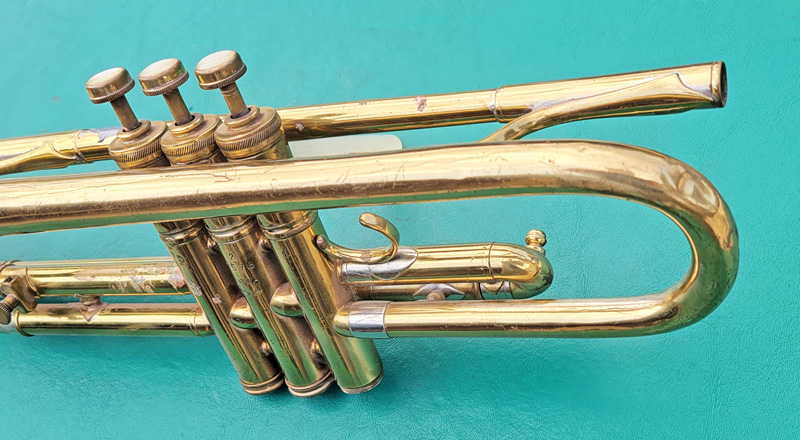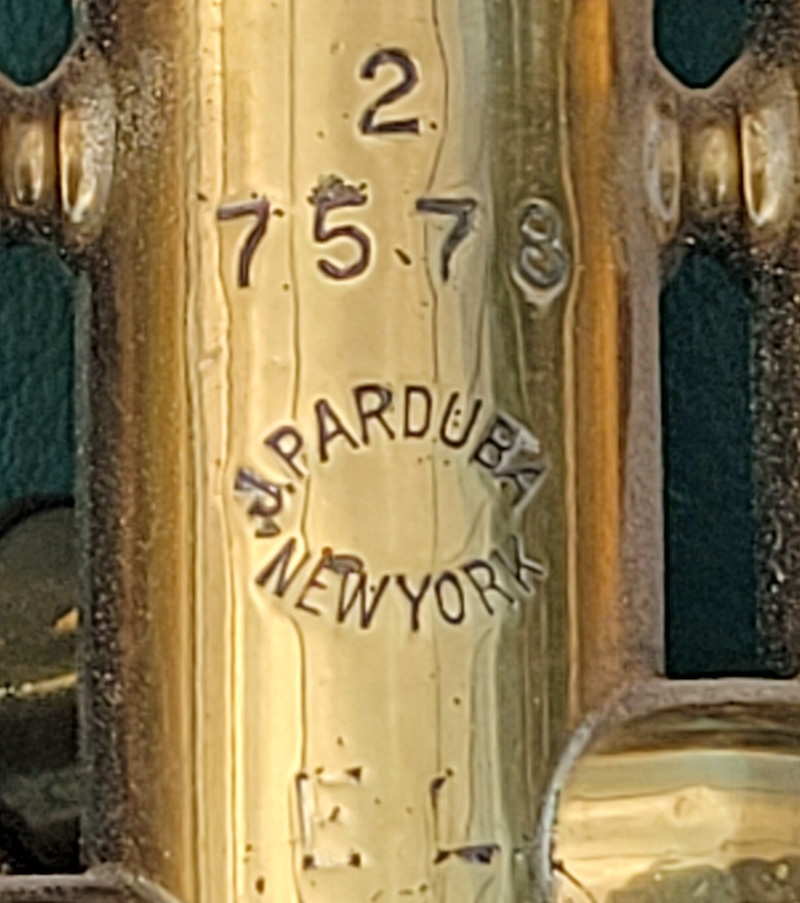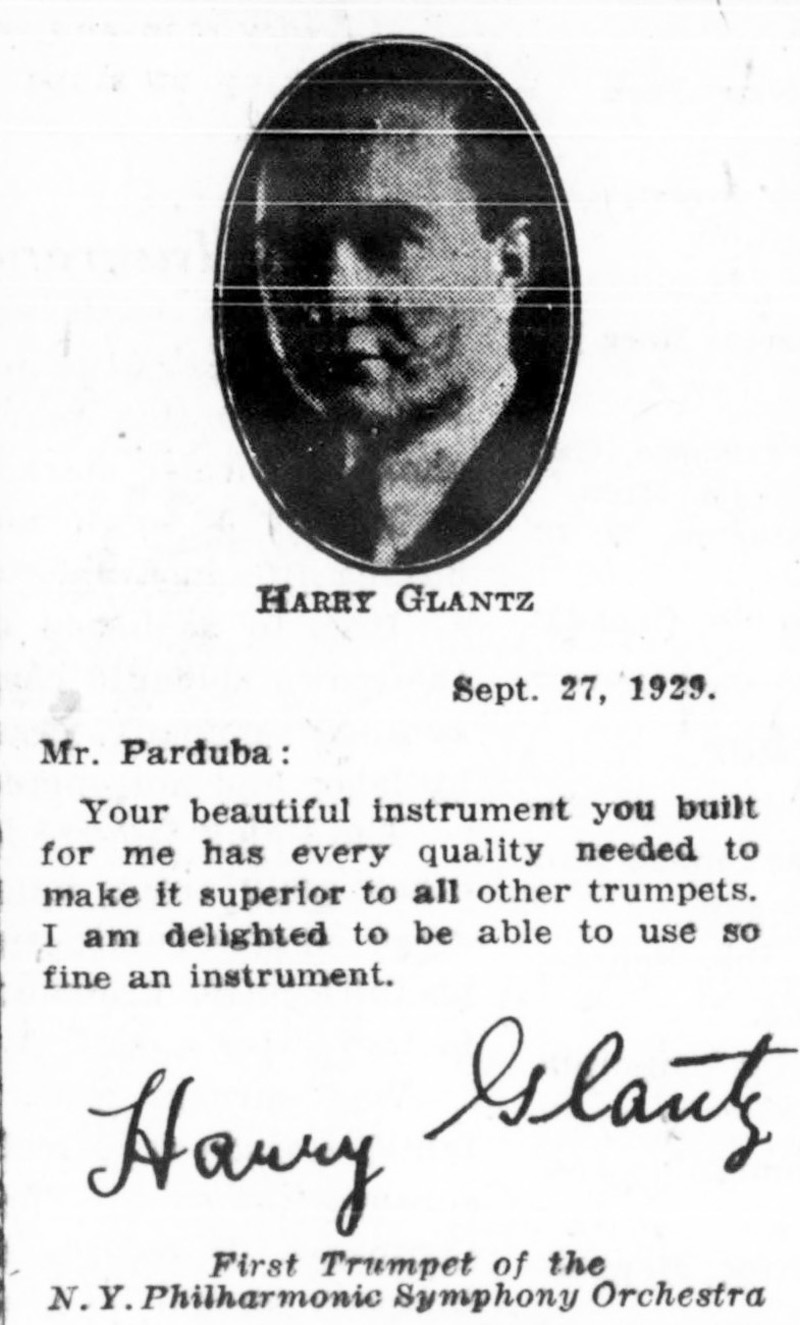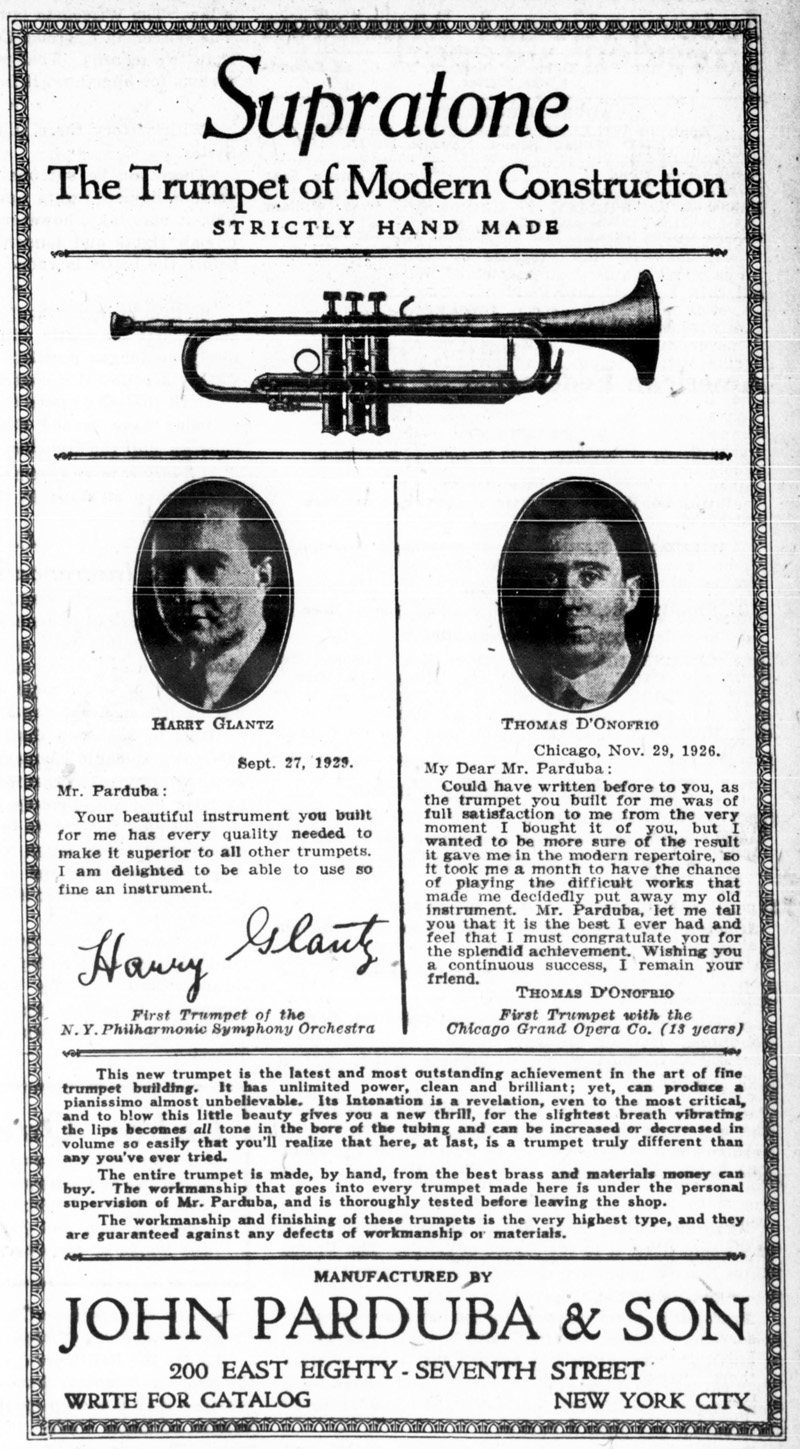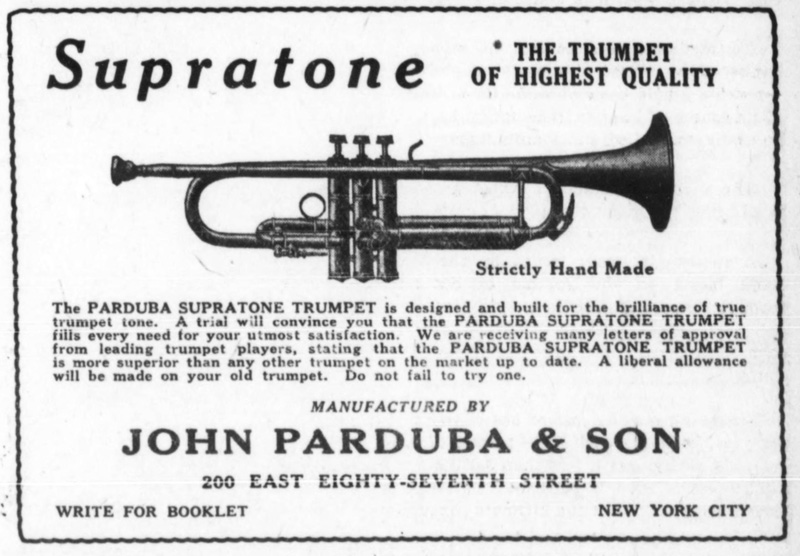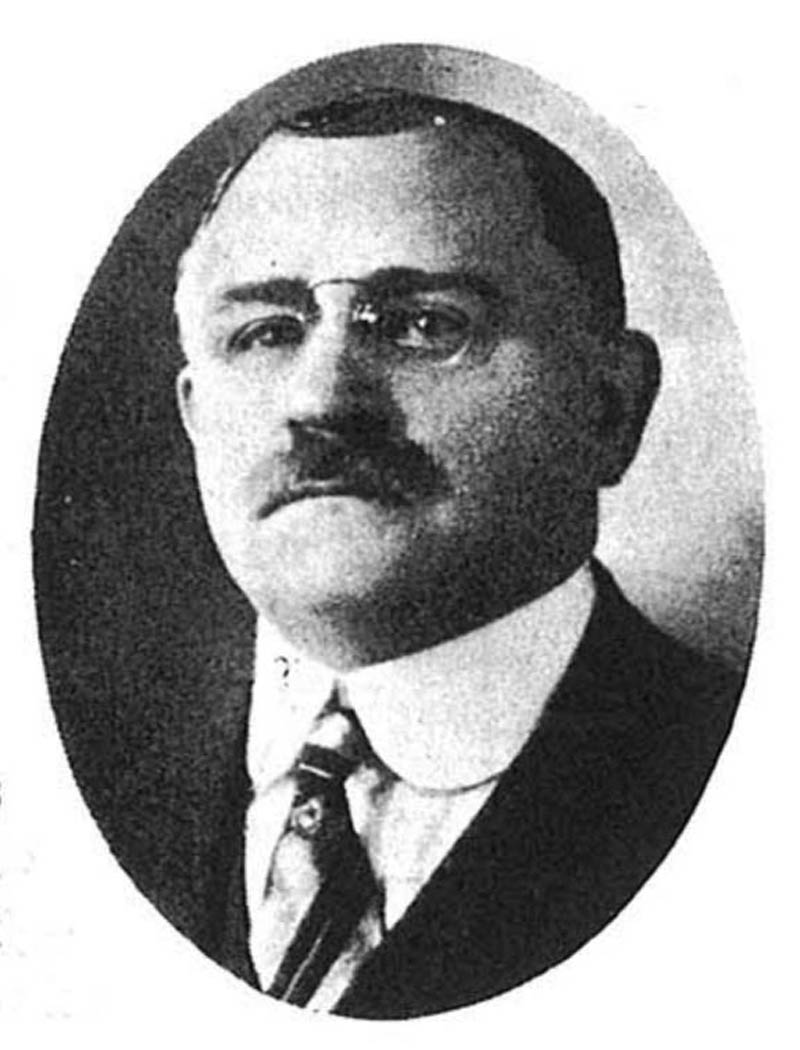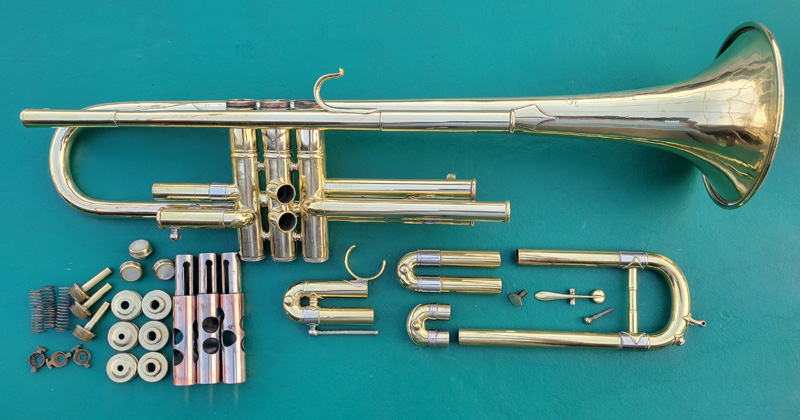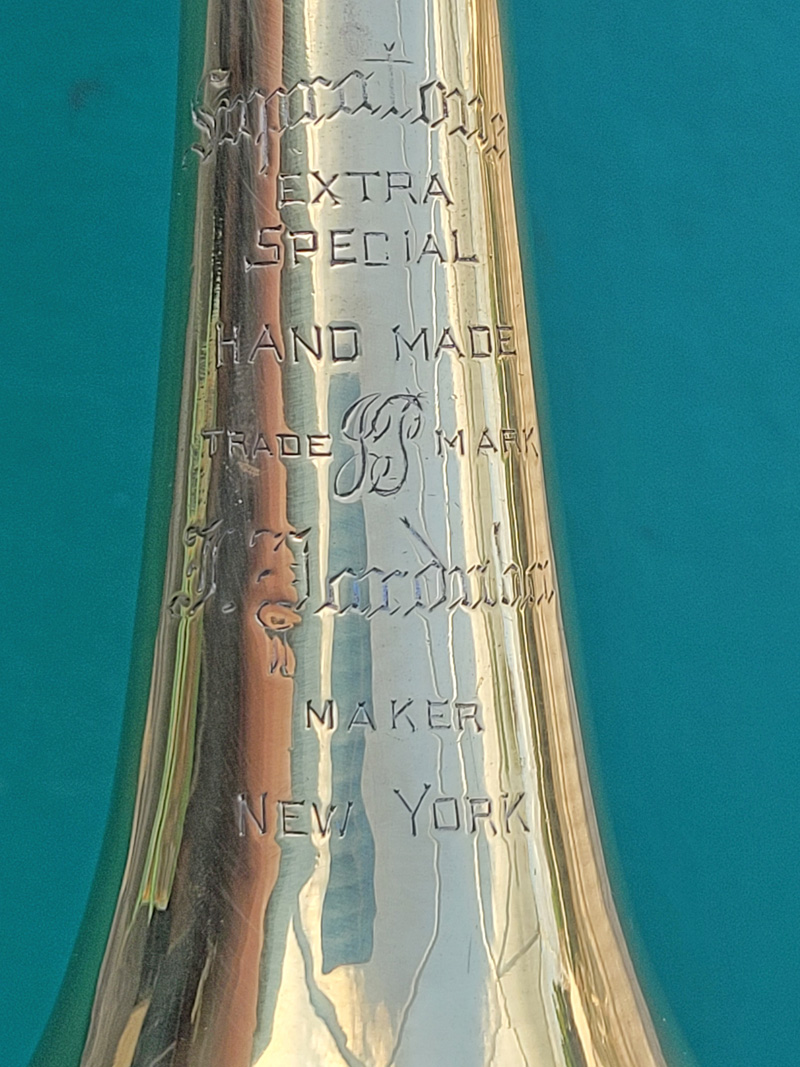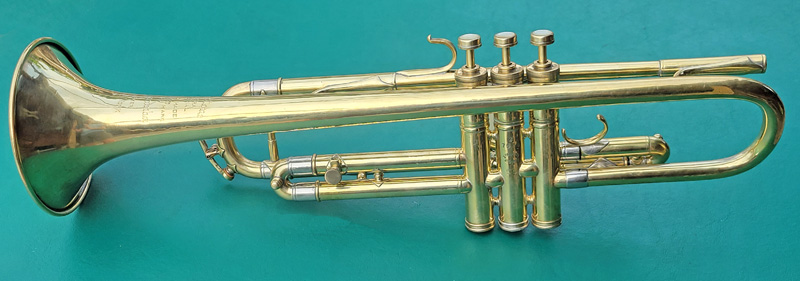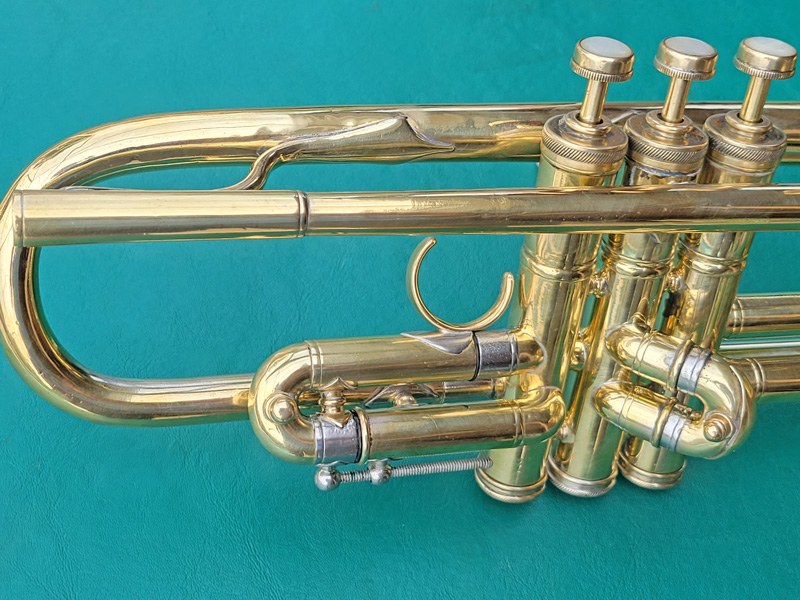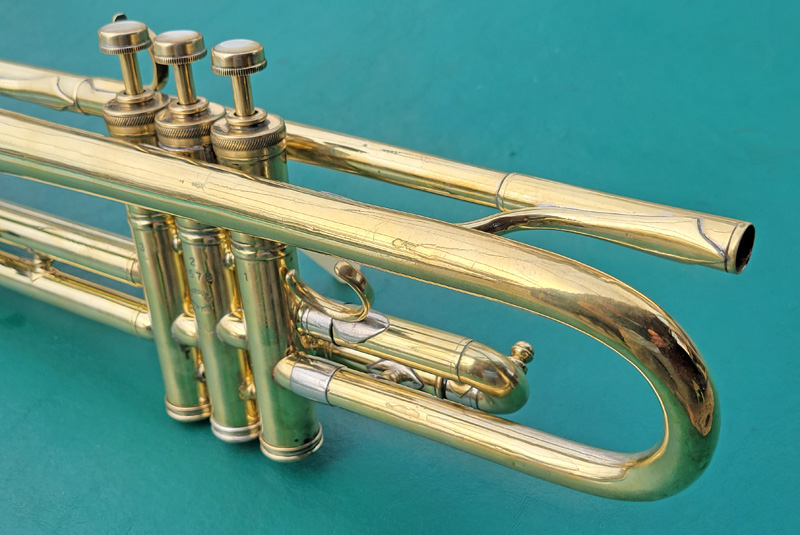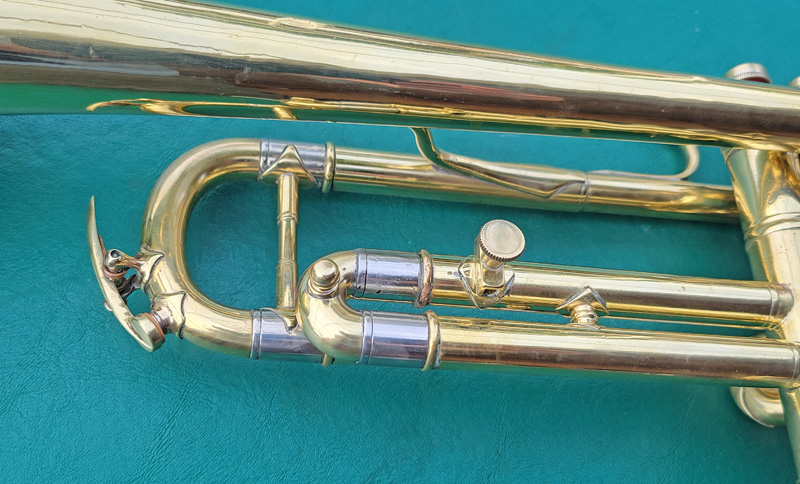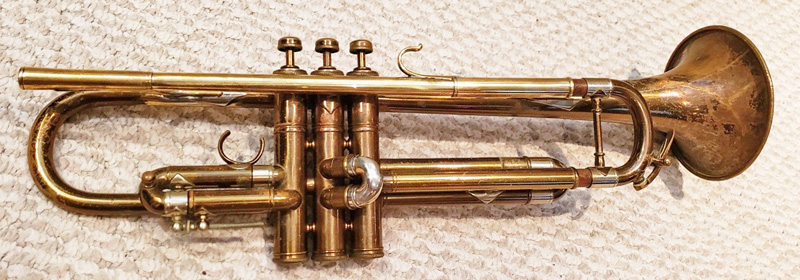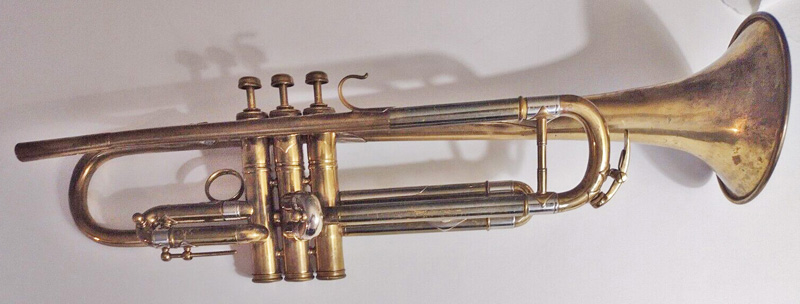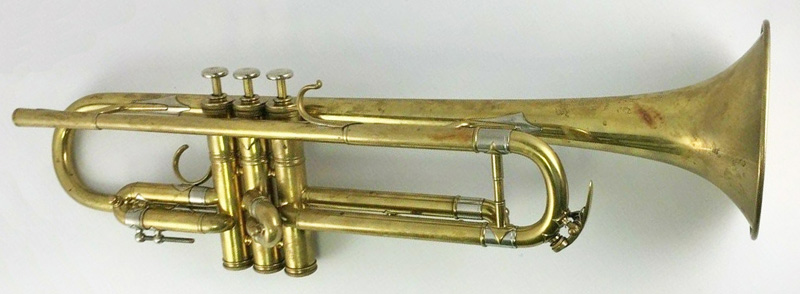 |
John Parduba & Son Supratone Trumpet |
|
|
John Parduba & Son Length = 19.25" Bell Marking: "Supratone / Extra Special / Hand Made / Trade JP Mark / J. Parduba / Maker / New York" I had seen Parduba trumpets come up for sale on rare occasions and was curious as to their history and quality. From what little I could find on them, they were supposed to be of good quality as a player, and dated from the late 1920s up to WWII. This example is typical of the Parduba design with a first slide saddle and forward-facing second slide. The valves are said to have been made by Blessing, but on closer inspection, I believe this example was actually made by William Frank in Chicago. The valve design, serial number, and "WIDE" marking all match the Frank Classic model from the 1930s. There is no definite serial number list for Frank, but from my research, #7578 should be around 1936. The bell is larger than the Classic model I had so I am assuming at this point that either Parduba made the bell or had Frank make it different. Here it is as purchased. A bit rough around the edges but the valves seemed good despite some plating wear.
Does "EL" stand for extra large bore? I have seen others marked "L" which might be 0.460".
All apart and the lacquer removed for repairs. There were a number of loose solder joints so I had to take it apart to this level.
John Parduba (1871-1946) was born in Litencic, Austria in 1871 and emigrated to New York City in 1898. He is often listed as an instrument maker and was one of the founders of the Euterpean Piano Company in 1908. His son John (1905-1997) was born in New York in 1905. A New York paper lists John as leasing a loft space starting in April of 1919 at #1545 3rd Ave in Manhattan. This is where his first shop was located to make mouthpieces and sell trumpets and cornets. The earliest mention that I have found for his trumpet is this 1926 letter below from Thomas D'Onofrio that was used in a 1930 ad.
In 1929, Harry Glantz wrote a letter to Parduba praising his trumpet. It is said that he used this from 1929 through the 1930s, yet by 1935, he was promoting Conn trumpets and mouthpieces.
Here is the full ad from 1930. This shows that he had moved his shop to #200 East 87th St by then. This is also the earliest image I have of his trumpet design. The only difference here is the closed finger loop rather than the open saddle found on most examples.
These two ads are from April and October of 1931.
In 1935, Parduba moved his shop to #140 West 49th St and in 1937, Harry James discovered his double-cup mouthpiece and became its most famous promoter. The last mention of his trumpets I could find was from June 1941. The article mentions making both trumpets and cornets but I have never found an example of a cornet. Here is John's image from that article.
John passed away in 1946 and my guess is that the trumpet business died with him. It has been said that the mouthpiece business became so large that they stopped the trumpets altogether. Here is the trumpet all restored and ready for assembly.
Some views of the finished horn. This plays fantastic and has a great tone. The valves are very smooth.
The question is did John Parduba actually make this or was it a stencil from another maker? The first clue is in the valves. Since I had recently restored a William Frank Classic model trumpet from the late 1930s, I recognized this as the same valve set and the same overall design. I even used a bottom cap from a Frank parts horn that fit on perfectly although the style was slightly different. Here is Frank trumpet #7901 made in Chicago.
Parduba #7578 for comparison. The valves, caps, and buttons are the same so seem to be from Frank. The bracing and some ferrules are different but the lead pipe looks the same. The bell on the Frank is 4.5" and the Parduba is 4.75" so possibly a different bell maker. You also have a weight difference; 34.1 oz for the Parduba versus 36.2 oz for the Frank. This may be due to a lighter bell on the Parduba.
Below are more examples of trumpets found at internet sales sites. #7522 The difference is in the bell braces that appear to have separate nickel silver flanges.
#7531 An example with the closed ring on the slide matching the ads.
#7546
#7569 Back to an open ring on the slide and different finger buttons.
I found a number of interesting discussions about the Parduba trumpet on the Trumpet Herald website. In 2008, Josh Landress wrote about three versions of the "Extra Special" model that had come into his shop. 1. All brass construction; large flange bell braces; 4.5" bell with side seam; 0.460" bore; Blessing valves with forward second slide. 2. All brass construction; three-piece bell braces like the ones shown above; one-piece 4.7" bell with bottom seam; 0.464" bore; Blessing valves with forward second slide; first and third slide rings. 3. Brass with nickel silver ferrules; smaller flange bell braces; two-piece 4.7" bell; 0.460" bore; Blessing valves with forward second slide; first slide ring only. All were great players. One person mentioned that these were possibly played by the Philadelphia Orchestra in the 1930s. The Ideal model had a wider wrap, first and third slide rings, and a 0.470" bore. John Parduba Jr said that his father was very particular about quality and spent time making these trumpets as best as possible. Someone claimed that Dick Akright said that they were used in the 1930s by the Cleveland Orchestra. The owner of #7540 said that his grandfather bought it from professional player Kurt Schmeisser in the 1930s. Schmeisser came from Germany and played for the Boston Symphony from 1923-1926, then went to the Detroit Symphony. It's marked "Supratone / Extra Special / Hand Made / Trade JP Mark / J. Parduba Maker New York" on the bell and "L" on the valve casing. If anyone has an example of a Parduba trumpet or cornet, please contact me so that I can develop a database of surviving instruments and learn more about how they were made. |

